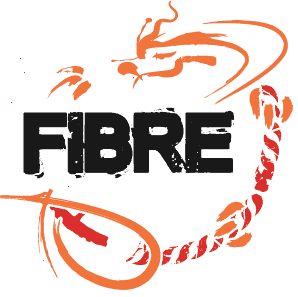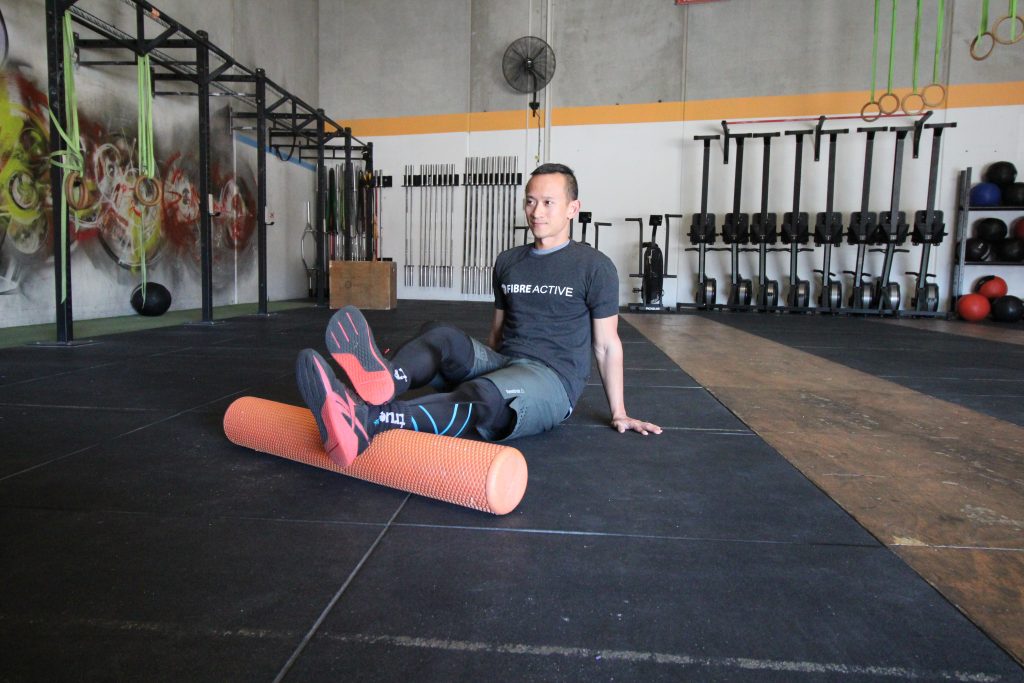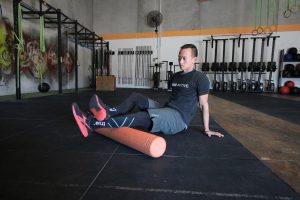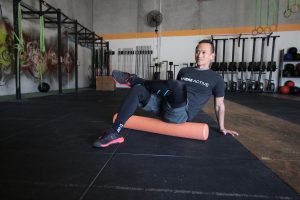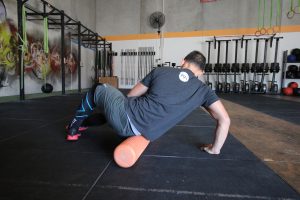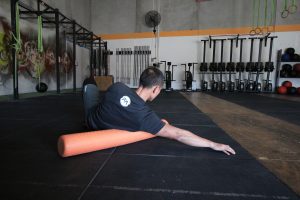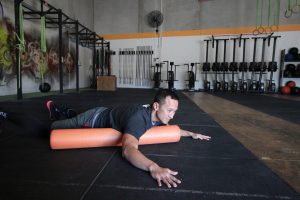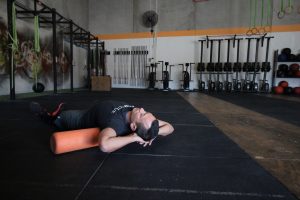Using the Foam Roller for Recovery
Addressing general soreness & improve recovery
Have you just have just smashed out a bone-crunching, soul-destroying workout that has left you crying for mummy?
You might need a foam roller to assist with your recovery and we have 12 spots you need to roll out! So grab one from your local gym otherwise, if your budget permits it, we highly recommend investing in one.
Let’s face it, we know that the foam roller is the poor man’s masseuse and it does work a majority of the time, but if you have some more serious aches and pains that cannot be rolled out, you may need to seek some more medical and professional advice. We recommend physios to check out your physical and musculoskeletal aches and pains.
For general soreness, delayed onset muscle soreness after a thumping workout, a foam roller and other toys like lacrosse balls and massage guns will generally be great to iron out the triggers and improve recovery.
Foam Rolling the muscles is easy, but you need to take your time on it. If it hurts good. Stay around the part that hurts and do not just roll past and just tickle it. The best advice I can give you is to buckle in, bite the spoon and stay on the sore bits, yeah like literally find it and stand on it or load up with a fair bit of weight on it until you almost pass out of pee in your pants a little (no don’t, I’m joking), just stay on it for about 8-9 out of 10 pain level.
Once you have found the spot and are on it, stop right on top of it and press down on it and BREATHE!
Breathe in and out.
Slowly.
The more controlled your breathing, the more you can relax and the more your muscles can relax and the easier it is to release the “trigger point”. If it is way too sore, you may have to keep coming back to it and work on it later or tomorrow. You may not want to overdo it as it will probably be a gradual thing.
The list of muscles below are the ones you would probably need to foam roll on if you do a fair bit of full body workouts. You can also look to focus on each individual one if you specifically have tightness in any of those muscle groups. Spot treatments are normally a good go to when you have specific tightness, but if you have the time, do spend up to 15mins rolling your whole body out. Your muscles will love you for it.
Here are 12 spots to roll out with your foam roller:
Achilles
Your achilles is that tendon that connects your calves to your heel. Impact work like jumping, skipping, running or general use can cause it to tighten. Not a normal spot to roll out, stay here for a short while to loosen the tissues. Tendons need to remain strong in its structure, but a bit of loosening with a gentle roll every so often will reduce overall sling tightness. 10-20 seconds roll.
Calves
Calves. Yes, the jump muscles. Get these ones rolled frequently. Work on the tips and sides of the muscle belly itself. The edges are usually spots where triggers may form and especially on the side. Chances are you may be tighter in the soleus muscle which is on the side. Spend 20-40 seconds on each muscle.
Hamstrings
The hamstrings are a large muscle group behind the legs and sometimes it is tight, but you do not feel it, or if you roll it, you may not feel the benefits of the roll. Does not matter. Keep foam rolling it regardless. There is a lot of stuff there, muscle, fat and tissues. You will probably use this group a lot and after those deadlifts, cleans, pulls you will need to loosen these guys up.
Quads
Brace yourself. This one will make you jump. If you jump on and you tighten up and freeze, you have a problem. Start at the knee and work your way up to the hips. SLOWLY. And BREATHE! Pulsing is good, Slowly is better, Screaming and Moaning is extra (fun to witness). This muscle is a big group and theres a lot of stuff here that you can work on depending on how much time you have to foam roll, straight up and down will work for now. Dare you to work on the inside of your thigh, but NOT on the outside. The inside will be your VMOs and your adductor groups too which can get super tight sometimes from your training and sitting position. Don’t forget to bite down on that spoon.
TFL aka Tensor Fascia Lata
The TFL is a little muscle at the top of your hips. It is off to the outside of your bony protrusion on your hips (ASIS). This muscle is a hip flexor and can sometimes get overly tight and active in your hip flexion type movements. It can also contribute to tightness of your “side” of your thigh which you then feel like you want to roll out, but it sometimes may not be the case. It may be the TFL muscle that is pulling tight on the ITBs. Can also be tightness from sitting down too much at your desk or car seat. Release this muscle instead and remember that spoon cause sometimes touching this can make you jump like you scared of spiders.
Glute Max
The Max, The Booty, The Power House, The driver of the hip. The gluteus Maximus is THE finisher and Hip extender. If you can use this portion of your hips, amazing. You will need a stretch and a roll out every time you do a workout. It is rare that you feel super sore in the glutes unless you have done a tonne of long step lunges, but if you do, these are just amazing to relieve the soreness. Spend about 30-40 seconds per side here.
Glute Medius
The glute medius is a small little muscle that “widens” your hips or gives you the thickness of hips from the front view. Over doing the booty band workouts will definitely give you soreness through here, together with excessive deep loaded squats like your snatch and cleans. The Glute meds help in stabilising the hips and if they have been excessively worked, then you will need to roll these guys out. Aim for the back of the hips, above the Max’s and off to the side. It sits just on the side of your hip and if you place your hands on your hips to recover, your thumbs are usually in contact with them.
QL – Quadratus Lumborum
The QLs are a group that connect your pelvis to your ribs and also your spine. You will have to sit the roller on between the hips and ribs. This square like muscle is in the low-back region and can sometimes get sore when you do a heap of hip extension movements. If you have just started lifting, these may get sore with your first couple of sessions. If you get sore regularly, check in with your coach to adjust your technique and dial it in more. It may seem that you are bending from your lower back and not using the hips to tilt. Spend about 15-30 seconds per side here.
Latissimus
To foam roll the lats, you need to lay across the foam roller at a diagonal. This is your pull muscle group. Roll from the base of your shoulder blade right down to the lower back. Its a pretty large slab of muscle which you will not miss, remember, rolling is always against the grain, just like how you slice your…nevermind…wrong context. You get the idea. Spend about 30-40 seconds here on each side.
Pectorals
Your chest is a large group of push muscles. Especially if you have done the Push Ups for Charity, you may need to work on these muscles. If you already are tight from your 9-5 in front of a monitor or raging on the road, spend 20-40 seconds on this muscle group to release the pecs which will allow your shoulders to sit more naturally on your back. Amazingly nice and wakes you up to.
Upper Back Thoracic Vertebrae
The upper back or thoracic spine, is a problematic area which can be tight for a majority of folks. If you are hunched over a lot working your regular 9-5, over a computer, seated, chances are you may be tight here. This is one of the many options to loosen the area. Spend 1-2 minutes relaxing and lying over this region. Feet straight out and on the floor. Melt into the foam roller and just breathe deeply out onto the foam roller. You will be amazed by how much relaxation and mobility you can get from foam rolling this part of your back out. Spend about 20-40 seconds here.
Abdominals
A more unconventional muscle group to roll out but if you have done a tonne of ab sit ups or GHD situps, you may be sore in your abs. Yup. You can roll them out. Careful not to do these when you have had some food. You may roll out your food too which can get a tad messy to clean up. Rolling your abs can release tightness in your gut which can affect your overall posture.
When you foam roll, stay focused on the task at hand and then always remember to test and retest. Check your movements to see if you have gotten some benefit from the rolling. If you have not, then you need to see someone about a more effective method of releasing those tight muscles.
If you enjoyed reading this, please feel free to share this on your socials or email the link to a friend. We would appreciate this muchly.
Check in with one of our coaches for a Complimentary Non-Sweat Session to assess your mobility and also your core strength if you would like. Let’s also chat and talk about your fitness goals and how we can help you.
Namaste.
